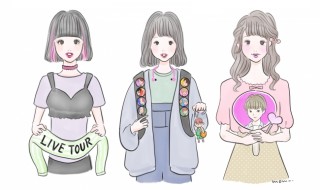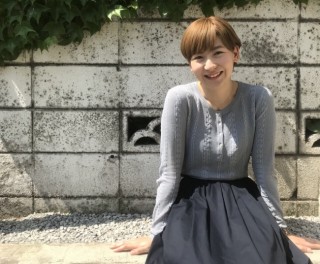Loading
Search
▼ Nearly 70 Percent of Young Japanese Women Self-identify as Otaku in Survey
- Category:Other
Seven out of ten say they enjoy anime and manga, and over 15 percent spend more than 90,000 yen a year on their otaku hobbies.
When most people hear the word “otaku,” the mental image they get is of a guy. Maybe he’ll be sporting one of the other stereotypical otaku visual cues, like a plaid shirt, unfashionably cut jeans, or an oversized backpack, but in any case, the initial otaku most people see in their mind’s eye is a man.
However, Japanese marketing research Shibuya109 lab recently conducted a survey among women aged 15 to 24, and found that nearly 70 percent of the respondents self-identify as otaku.
For the purposes of the smartphone-based survey, which collected 400 responses, Shibuya109 lab defined otaku as “a fan who spends a lot of time or money” on their hobby. By that criteria, 69.3 percent of the respondents said that yes, they are otaku.
As for where their specific otaku interests lie, the top five responses were:
● Anime, manga, and/or video games: 28.2 percent
● Japanese male idols/celebrities: 24.9 percent
● Japanese bands/musicians: 10.1 percent
● Foreign male idols/celebrities: 6.9 percent
● Japanese female idols/celebrities: 6.5 percent
When most people hear the word “otaku,” the mental image they get is of a guy. Maybe he’ll be sporting one of the other stereotypical otaku visual cues, like a plaid shirt, unfashionably cut jeans, or an oversized backpack, but in any case, the initial otaku most people see in their mind’s eye is a man.
However, Japanese marketing research Shibuya109 lab recently conducted a survey among women aged 15 to 24, and found that nearly 70 percent of the respondents self-identify as otaku.
For the purposes of the smartphone-based survey, which collected 400 responses, Shibuya109 lab defined otaku as “a fan who spends a lot of time or money” on their hobby. By that criteria, 69.3 percent of the respondents said that yes, they are otaku.
As for where their specific otaku interests lie, the top five responses were:
● Anime, manga, and/or video games: 28.2 percent
● Japanese male idols/celebrities: 24.9 percent
● Japanese bands/musicians: 10.1 percent
● Foreign male idols/celebrities: 6.9 percent
● Japanese female idols/celebrities: 6.5 percent
Further down the list, and all making up less than 5 percent of responses, were the smaller otaku demographics for things such as sports, movies, theme parks, and fashion, some of which don’t fit the “geeky” stigma often attached to the word otaku.
In addition to being part of the largest field of interest, anime and manga enjoy widespread popularity even among those who didn’t pick it as their number-one otaku passion. When asked if they liked anime or manga, more than half of the women said they did, with their answers breaking down as:
● I like them a lot: 35.5 percent
● I like them: 34.5 percent
● I’m indifferent: 12 percent
● I don’t like them very much: 11 percent
● I don’t like them at all: 6.8 percent
The survey also asked how often the women indulge in their otaku hobbies, with the most common response, by far, from 61.4 percent, being “almost every day,” with only 3.6 percent saying they go otaku just once a week.
However, some may question the applicability of the label “otaku” for some of the respondents based on their monetary expenditures. 17.3 percent of the respondents said that, annually, they spend less than 5,000 yen (US$45) on their otaku hobbies, a cutoff line that’s low enough that you could exceed it by buying two anime Blu-rays or a single major release video game.
But on the other end of the spectrum, 4.3 percent of the women said they drop more than 150,000 yen (US$1,340) a year on their otakuism, with a total of 16.9 percent spending more than 90,000 yen, and 15.2 percent, the largest single demographic after the sub-5,000 group, spending between 30,000 and 50,000 every year.
Shibuya109 lab also repeated the survey with on-site questionnaires at Tokyo’s trendy Shibuya 109 shopping center, one of the city’s fashion meccas, and got slightly different results from the 100 responses it collected there.
For that group, an even larger proportion, 77 percent, identified as otaku, but their biggest interests were male idols/celebrities from Japan (35.1 percent) and overseas (19.5 percent), and only 5.2 percent of the shoppers would call themselves anime/manga/game otaku (though te majority, 54 percent, still said they liked anime/manga).
They were also much bigger spenders, with 27.3 percent spending 90,000 yen or more a year on their hobbies.
Still, the smartphone survey results show that there are plenty of young Japanese women interested in the orthodox otaku triumvirate of anime, manga, and games (some of them very, very strongly).
In addition to being part of the largest field of interest, anime and manga enjoy widespread popularity even among those who didn’t pick it as their number-one otaku passion. When asked if they liked anime or manga, more than half of the women said they did, with their answers breaking down as:
● I like them a lot: 35.5 percent
● I like them: 34.5 percent
● I’m indifferent: 12 percent
● I don’t like them very much: 11 percent
● I don’t like them at all: 6.8 percent
The survey also asked how often the women indulge in their otaku hobbies, with the most common response, by far, from 61.4 percent, being “almost every day,” with only 3.6 percent saying they go otaku just once a week.
However, some may question the applicability of the label “otaku” for some of the respondents based on their monetary expenditures. 17.3 percent of the respondents said that, annually, they spend less than 5,000 yen (US$45) on their otaku hobbies, a cutoff line that’s low enough that you could exceed it by buying two anime Blu-rays or a single major release video game.
But on the other end of the spectrum, 4.3 percent of the women said they drop more than 150,000 yen (US$1,340) a year on their otakuism, with a total of 16.9 percent spending more than 90,000 yen, and 15.2 percent, the largest single demographic after the sub-5,000 group, spending between 30,000 and 50,000 every year.
Shibuya109 lab also repeated the survey with on-site questionnaires at Tokyo’s trendy Shibuya 109 shopping center, one of the city’s fashion meccas, and got slightly different results from the 100 responses it collected there.
For that group, an even larger proportion, 77 percent, identified as otaku, but their biggest interests were male idols/celebrities from Japan (35.1 percent) and overseas (19.5 percent), and only 5.2 percent of the shoppers would call themselves anime/manga/game otaku (though te majority, 54 percent, still said they liked anime/manga).
They were also much bigger spenders, with 27.3 percent spending 90,000 yen or more a year on their hobbies.
Still, the smartphone survey results show that there are plenty of young Japanese women interested in the orthodox otaku triumvirate of anime, manga, and games (some of them very, very strongly).
- July 18, 2018
- Comment (0)
- Trackback(0)



